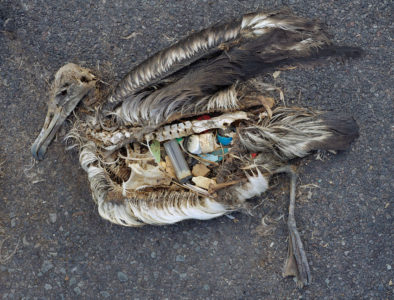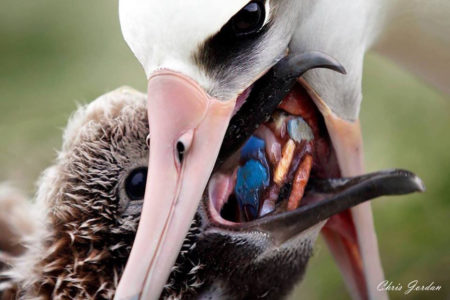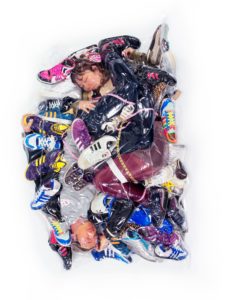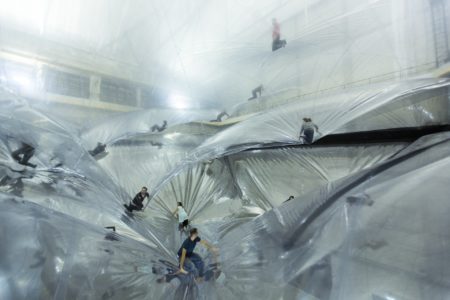Workshop VI, Amanda Boetzkes, 7 July 2020
Amanda Boetzkes presents her research on “plastic capitalism”, opening with a series of powerful images from Chris Jordan’s ongoing project Midway (Albatross) (since 2010). His work shows how the albatross, attracted to the substance, ingests plastic objects with lethal consequences. Plastic is thus shown as the exemplary substance of the predicament that waste never disappears. The ability to create plastics through chemical refinement exceeds our capacity to subsequently deal with plastic.
Plastic is an aesthetic agent that technologically mediates the planet in several ways. Firstly, plastic conditions the future under the pretence of disposability. Secondly, it integrates itself into the planet and returns as a post-human, alien material. Thirdly, it raises the question of the extent to which how we perceive plastics is integral to its gestation. Reaction – whether chemical, behavioural or affective reaction – thus becomes reality. How can we disentangle from this feedback loop?
Our perspective here is crucial. The way we see mediates how we perceive plastic. We see through plastic. As it is useful, we do not see it, as per Heidegger’s famous “tool analysis”. We value/see the hammer after it breaks, not before when it has been absorbed in its use. This usefulness and value have to do with visibility then. How can we see plastic when it mediates our very perception? A better understanding of how we perceive is the notion of affordance, that we both perceive and co-perceive and that subjectivity and objectivity interact.
Reaction – allergic, affective, aesthetic etc. – becomes reality. Plastic is both expression and the antithesis of expression, giving us no spatio-temporal coordinates. Plastic sheds all references to a located space and time; it is because of this that plastic feels infinite.
The range of possible reactions can be illustrated by comparing Haruhiko Kawaguchi’s photographic series Zatsuran (2015) and Tomás Saraceno’s installation On Space Time Foam (2012). Kawaguchi’s work consists of couples wrapped together in shrink wrap with their favourite commodities, thus preserved forever in an incubated state, with plastic affectively charged to convey feelings of love. Saraceno’s installation allows people to walk in a landscape of three levels of transparent film spanning the interior of a hangar. The layers of film respond to their movement, making their actions in the space relational and tentative. The reflexive and non-linear work thus embodies environmental feedback.
We could see plastic as the uncanny of oil. Neither oil nor plastic is invisible, yet they are different specialties. Is one the unconscious of the other?
plastic I capitalism I waste I perception I visibility I affordance I reactions



